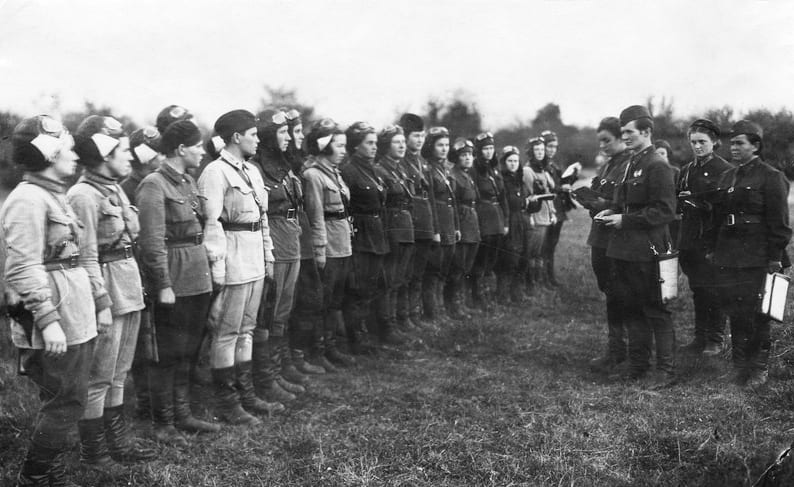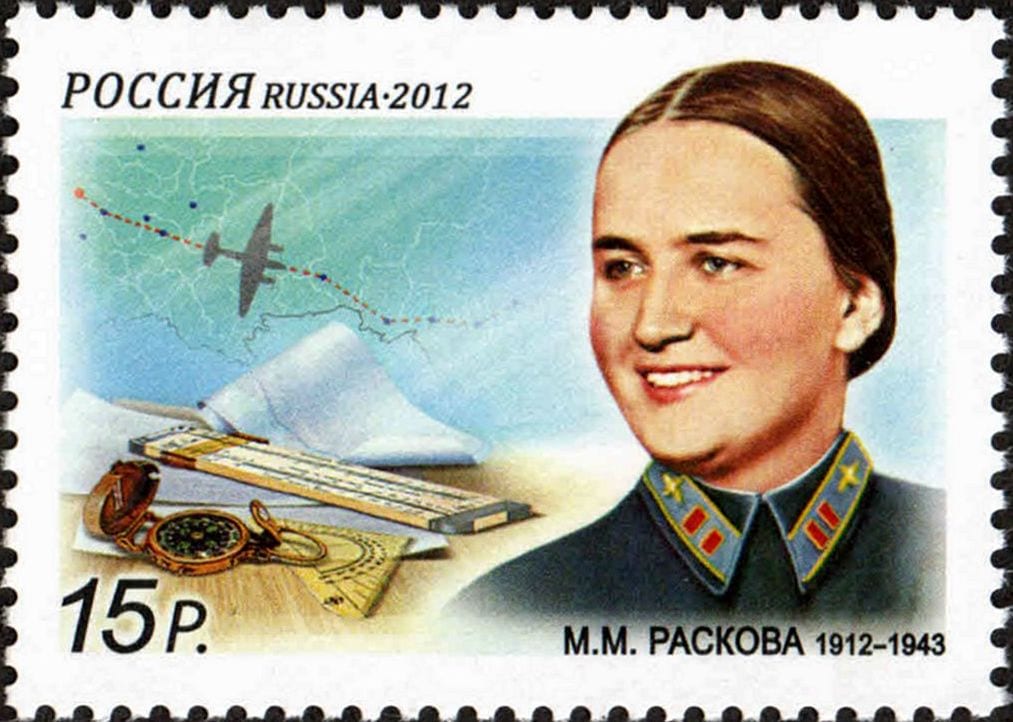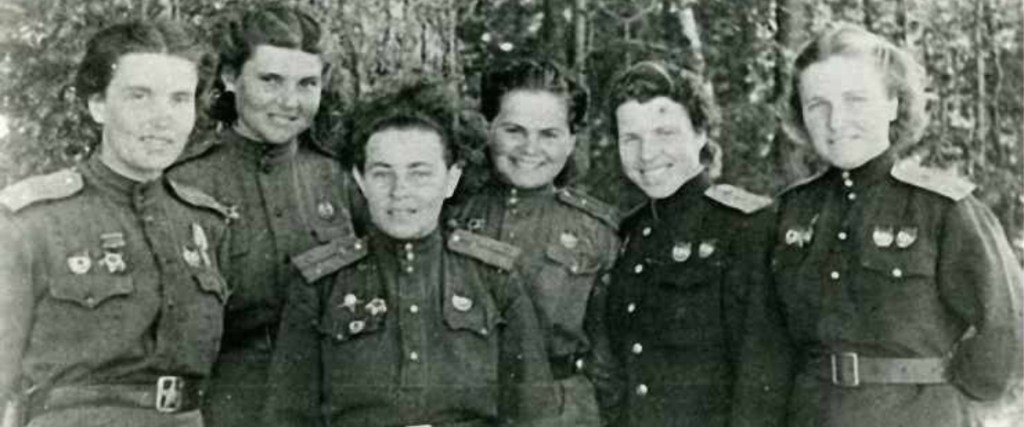Any group of people, regardless of gender, who sent Nazis running is okay in my book. That said, The Night Witches have a particularly bada** story, so buckle up.
During World War II, Soviet women grew tired of watching their men go off to the front lines while they stayed home, unable to contribute except in supportive, behind-the-scenes ways. Many wanted to engage in direct combat, and one of those women was Colonel Marina Raskova (the “Soviet Amelia Earhart”). When she learned of other women with similar desires, she petitioned Joseph Stalin for the right to organize a regiment of female pilots. She also lobbied for Soviet women to be included in the draft.
He granted her request in October, 1941, and the 588th Night Bomber Regiment of the Soviet Air Forces – the Night Witches – was born. Every single individual, from the pilots all the way down to the planes’ mechanics, was female.

Image Credit: Wikipedia
The 400 (or so) women, aged 17-26, were given uniforms that were too large, boots that had to be stuffed with torn bedding in order to make stay, planes that were never intended for combat, and very few expectations of success from higher ups.
Their planes – Polikarpov P0-2 – were crop dusters. They had two seats, an open cockpit, no protection from the elements, no radar, no machine gun, no radio, and no parachute. The women gritted their teeth against sub-zero temperatures, freezing winds, and the risk of frostbite, making do with a map, a compass, rulers, stopwatches, flashlights, and pencils.

Image Credit: Wikipedia
They did more than make do, actually – they flew 30,000 bombing raids and dropped more than 23,000 tons of munitions on the German army during their 4-year tenure.
The planes could also only carry two bombs at a time, which meant many of those missions were flown in quick succession – they averaged 8 a night, and Nadezhda Popova, the squad’s legendary commander, once infamously flew 18 successful missions in a single night.
Even though the planes had their disadvantages, the small and primitive construction also made them hard to spot on radar and allowed them the capability of gliding, engine-less, to their drop points. The pilots could cut their engines and glide at half speed, which left the unsuspecting German army with little-to-no warning that a bomb was about to come crashing down.

Image Credit: Wikipedia
It was this tactic that earned them the moniker “the Night Witches,” since soldiers thought the dead planes resembled a witch’s broomstick against the night sky.
They struck fear into the hearts of advancing German armies, with soldiers afraid to do so much as light a cigarette in case it gave away their position. Rumors raged that the Soviets were using experimental medicine in order to enhance the eyesight of their female pilots, and the military promised Iron Cross medals to any soldier who shot one of the Witches down.
They only flew in the middle of the night – their technical disadvantages would have left them sitting ducks otherwise – and they always flew in groups of three. Two planes would veer off in order to draw enemy fire while the third continued to drop its bombs, then they would repeat the maneuver with one of the other planes at the center until all of the weapons had been deployed.

Image Credit: Wikipedia
32 Night Witches died during their service, including Colonel Raskova, who was celebrated with the first state funeral of WWII and buried in the Kremlin. 23 pilots, including Popova, were awarded the title “Hero of the Soviet Union.”
Basically they were a group of badass women who worked on subpar planes that they flew in the dead of night, in the dead of winter, over enemy encampments, without backing down or turning back.
A worthy history lesson to repeat, in my opinion.






